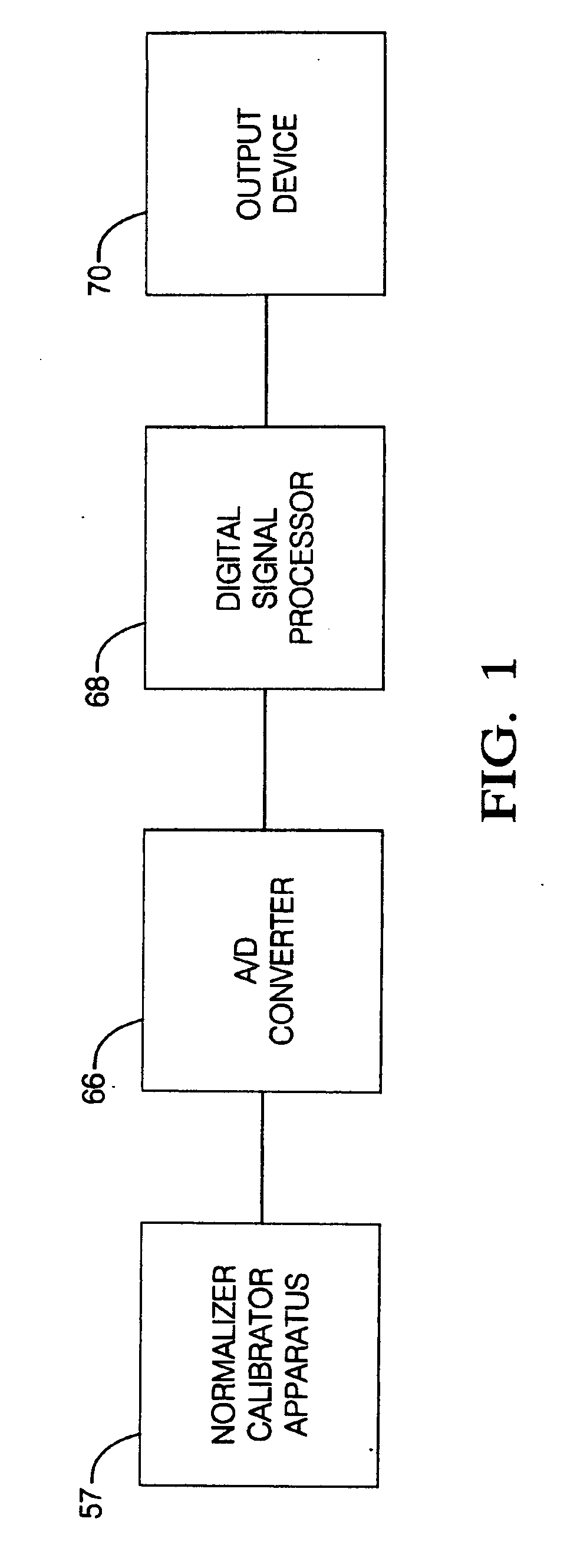Normalization and calibration of microphones in sound-intensity probes
a technology of sound intensity and calibration, which is applied in the direction of transducer details, electrical transducers, electrical apparatus, etc., can solve the problems that calibration and phase-matching at a single frequency cannot be used to make corrections to provide substantially identical responses between microphones, and the lower limit cannot be used to achieve accurate measurements of sound intensity
- Summary
- Abstract
- Description
- Claims
- Application Information
AI Technical Summary
Benefits of technology
Problems solved by technology
Method used
Image
Examples
Embodiment Construction
[0032]FIG. 1 shows a block diagram of the normalizer-calibrator system. Signals from the normalizer-calibrator apparatus 57 are passed through an A / D converter 66 to the digital signal processor 68 which determines the transfer functions between individual microphones of a sound-intensity probe and a comparison microphone. Results are displayed using the output device 70. FIG. 2 depicts elevation and plan views of the normalizer-calibrator apparatus 57. This consists of a tube 80 with a loudspeaker 82 at one end and a fixture 76 for holding the microphones from the sound-intensity probe and the comparison microphone at the other end. All the microphones are flush with the inner surface of the fixture where they are simultaneously exposed to plane waves proceeding down the normalizer-calibrator tube from the speaker. The speaker is controlled by the digital signal processor. In general it emits pseudo-random white noise or other broadband time-invariant or stationary signals. Standin...
PUM
 Login to View More
Login to View More Abstract
Description
Claims
Application Information
 Login to View More
Login to View More - R&D
- Intellectual Property
- Life Sciences
- Materials
- Tech Scout
- Unparalleled Data Quality
- Higher Quality Content
- 60% Fewer Hallucinations
Browse by: Latest US Patents, China's latest patents, Technical Efficacy Thesaurus, Application Domain, Technology Topic, Popular Technical Reports.
© 2025 PatSnap. All rights reserved.Legal|Privacy policy|Modern Slavery Act Transparency Statement|Sitemap|About US| Contact US: help@patsnap.com



